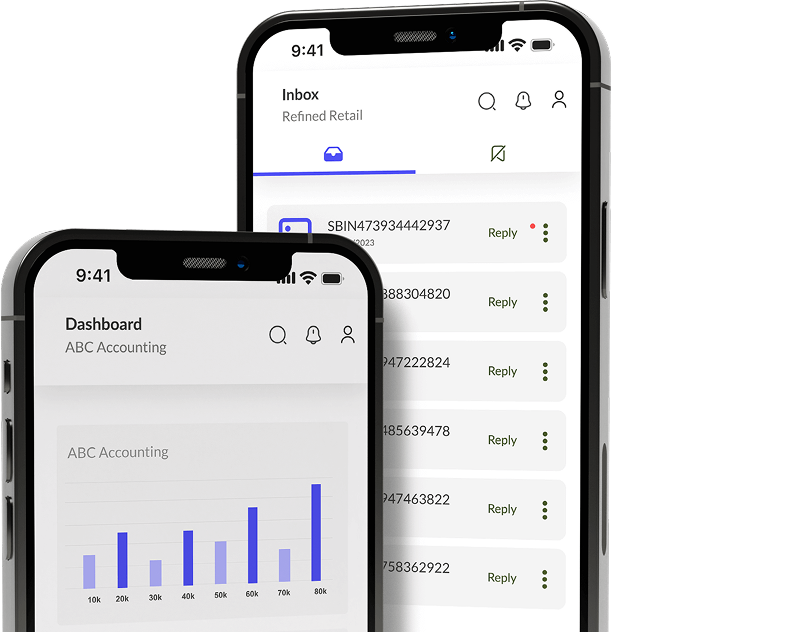Running a business in India is hard enough. But running it without clear financial practices? That’s how a lot of MSMEs find themselves stuck. Not because they’re reckless, but because no one ever taught them how to manage money like a company, not a household.
Debt doesn’t start with one bad move. It’s usually a string of small decisions that go unchecked until the business is suddenly deep in trouble. It’s when they are unable to pay vendors, miss salaries, and are borrowing again just to stay afloat.
We’re not here with judgment. We’re just calling out what’s really going wrong and what can be done differently.
Misstep 1: Flying Blind Without Financial Visibility
We won’t say all, but some MSMEs operate without real-time numbers.
The founder knows roughly what’s in the bank. There might be an accountant who updates the books at month-end. But that’s it. No dashboard. No live view of receivables. No forecasting. Just assumptions.
So when a major payment gets delayed, or when multiple bills hit at once, the panic begins. And to cover the shortfall, the default answer is: take a loan.
According to SIDBI (Small Industries Development Bank of India), a huge number of Indian MSMEs are either unserved or under-served by formal financial systems, not because credit isn’t available, but because their internal numbers are too unreliable to make them eligible or stable borrowers.
Misstep 2: Treating the Business Like a Wallet
One of the most damaging habits is mixing personal and business money.
From buying groceries on the business card to using family savings to cover GST dues, the lines get blurry fast. And once they blur, tracking becomes impossible. What was a business expense? What was personal? Which invoice went unpaid? What was the actual profit last month?
This doesn’t just create confusion. It weakens your ability to defend your financials, whether in front of a lender, investor, or even the tax department.
Misstep 3: Borrowing a Loan Without a Plan
Short-term loans are everywhere now, NBFCs, credit cards, overdraft schemes, buy-now-pay-later for B2B platforms. And when cash runs tight, they seem like the obvious way out.
But many MSMEs stack loans without checking interest rates, repayment schedules, or total exposure. EMI stress becomes normal. Monthly obligations start consuming working capital. And instead of solving the cash gap, the loans quietly deepen it.
According to RBI data, credit to MSMEs grew by 19.1% year-on-year as of December 2023, reaching nearly ₹24 lakh crore. That kind of growth doesn’t just indicate business expansion; a lot of it is compensating for cash problems.
Misstep 4: Ignoring Collections While Extending Credit
In the Indian B2B space, credit is a common expectation. MSMEs often provide 15–30 day payment windows, and stretch it further for loyal customers.
The issue is not credit. It’s the absence of discipline.
Invoices aren’t followed up. Payment reminders aren’t sent. Customers delay payments because they know no one is chasing them. And the MSME ends up borrowing to cover a gap that wouldn’t exist if the cash had simply arrived on time.
By the time the founder realizes the seriousness of the overdue payments, it’s too late. They’ve already taken a loan to pay this month’s salaries.
Misstep 5: Mishandling GST and Compliance
This one sneaks up.
Many MSMEs file GST returns without reconciling GSTR-2A or 2B. They depend entirely on external accountants, often once a quarter. Input tax credit is claimed without checking if vendors filed correctly. Refunds are delayed. Late filings lead to penalties. And penalties pile up silently.
Over time, what looks like a manageable tax issue becomes a compliance mess that hurts cash flow, credit score, and confidence.
Misstep 6: Choosing Quick Fixes Over Financial Hygiene
In the pressure to keep things running, MSMEs often choose temporary relief over long-term structure.
They underprice services to win customers. Delay professional audits. Avoid investing in basic tools like inventory trackers, billing software, or cash flow sheets. Every decision seems minor. But the net effect is a system that can’t scale, and breaks down the moment something unexpected happens.
So Where Does All This Lead?
Debt. And not the good kind.
This isn’t “growth capital” debt that fuels expansion. It’s survival debt. The kind that quietly takes over a business. You don’t notice at first because things are still moving. Customers are coming in. Staff are showing up.
But month after month, you’re using tomorrow’s money to cover yesterday’s mistakes. That’s the trap.
And it’s backed by data. According to a CRN study, MSMEs that use digital or AI-based financial tools can reduce mismanagement risks by up to 40%. But most MSMEs still don’t adopt these tools, not because they can’t afford them, but because no one’s shown them how critical they are.
Finally…
Indian MSMEs aren’t failing because they’re lazy or irresponsible. They’re failing because they’re too busy surviving to fix their systems.
But debt isn’t just a cash issue. It’s a habit issue.
Fixing this doesn’t mean becoming a financial expert overnight. It means:
Keeping clean books
Setting reminders for receivables
Asking questions before signing a loan agreement
And creating just enough structure to stop fighting the same fire every month
Because you don’t need to be great at finance to run a successful business. You just need to stop ignoring it.
Sources:
SIDBI Annual Report 2023–24
RBI MSME Lending Data, December 2023
CRN India Report on AI and Financial Management (2024)
Financial Express MSME Credit Report




